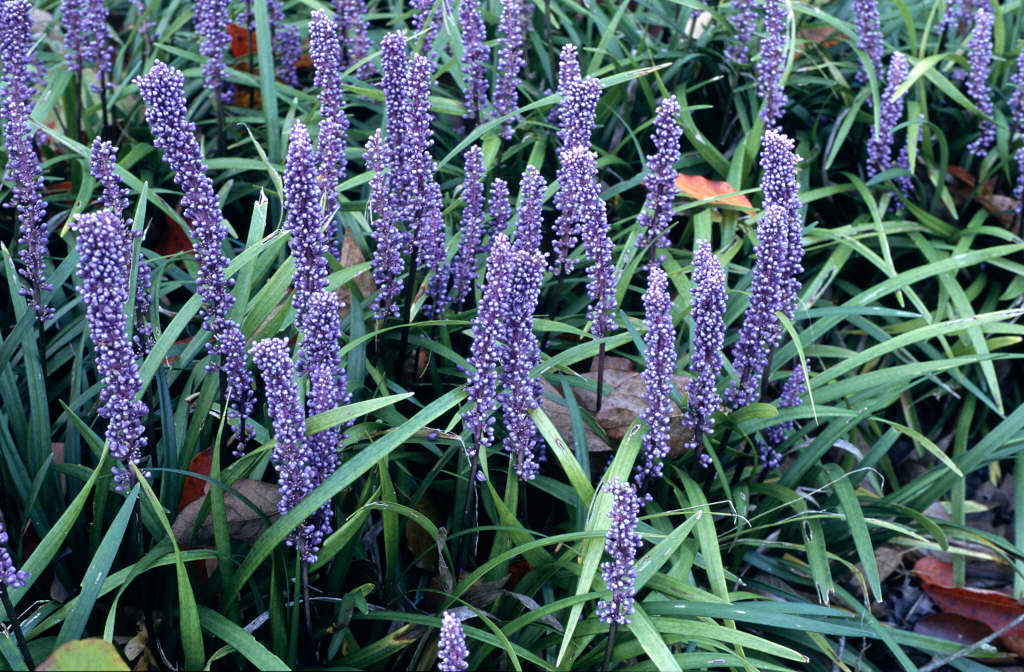Liriope graminifolia misapplied
big blue lilyturf
An evergreen, tuberous perennial forming a dense clump of narrow, arching, leathery, dark green leaves. Dense, upright spikes of small, violet-purple flowers appear in autumn, followed by black berries
Other common names
阔叶山麦冬 (kuòye shān mài dōng)Size
Ultimate height
0.1–0.5 metresTime to ultimate height
2–5 yearsUltimate spread
0.1–0.5 metresGrowing conditions
Moisture
Moist but well–drainedpH
Acid, NeutralColour & scent
| Stem | Flower | Foliage | Fruit | |
| Spring | Green | |||
|---|---|---|---|---|
| Summer | Green | |||
| Autumn | Purple | Green | Black | |
| Winter | Green | Black |
Position
- Full shade
- Partial shade
Aspect
West–facing or East–facing or North–facing
Exposure
Sheltered Hardiness
H5Botanical details
- Family
- Asparagaceae
- Native to GB / Ireland
- No
- Foliage
- Evergreen
- Habit
- Clump forming
- Genus
Liriope are evergreen herbaceous perennials forming compact clumps or spreading patches of arching, linear leaves and dense spikes or racemes of small globose flowers, followed by black berries
- Name status
Correct
- Plant range
- E Asia
How to grow
Cultivation
Grow in light, moderately fertile, preferably acid, moist but well-drained soil in partial or full shade; can tolerate drought once established. Shelter from cold, drying winds in frost-prone areas
Propagation
Propagate by seed sown in containers outdoors in spring or propagate by division in spring
Suggested planting locations and garden types
- City and courtyard gardens
- Cottage and informal garden
- Patio and container plants
- Banks and slopes
- Flower borders and beds
- Ground cover
- Underplanting of roses and shrubs
Pruning
Cut old leaves down to the ground in spring to encourage fresh foliage
Pests
May be susceptible to slugs
Diseases
Generally disease-free
Get involved
The Royal Horticultural Society is the UK’s leading gardening charity. We aim to enrich everyone’s life through plants, and make the UK a greener and more beautiful place.
